Ball pythons are among the most popular pet snakes worldwide, largely due to their calm demeanor and the incredible variety of colors and patterns they can display. Over the years, breeders have developed hundreds of ball python morphs—unique genetic variations that create stunning ball python colors and patterns. This article will explore 20 of the most popular ball python colors and morphs, providing you with key information and images to appreciate these beautiful reptiles.
What Are Ball Python Morphs?
Ball python morphs are specific genetic variations that influence the snake’s appearance, including ball python colors, pattern, or a combination of both. These morphs are achieved through selective breeding, and some are naturally occurring. The variety of ball python colors is nearly limitless, making them highly desirable to reptile enthusiasts.
Below, we’ll discuss 20 different Types of ball pythons morphs, along with descriptions of their traits, unique features, and pictures to illustrate their beauty.
1. Normal (Wild Type)
The Normal ball python, or Wild Type, features a classic combination of dark brown or black with tan, gold, and light brown patterns. This is the natural appearance of ball pythons in the wild.
Traits: Natural coloration, common pattern.
2. Albino Ball Python Morph
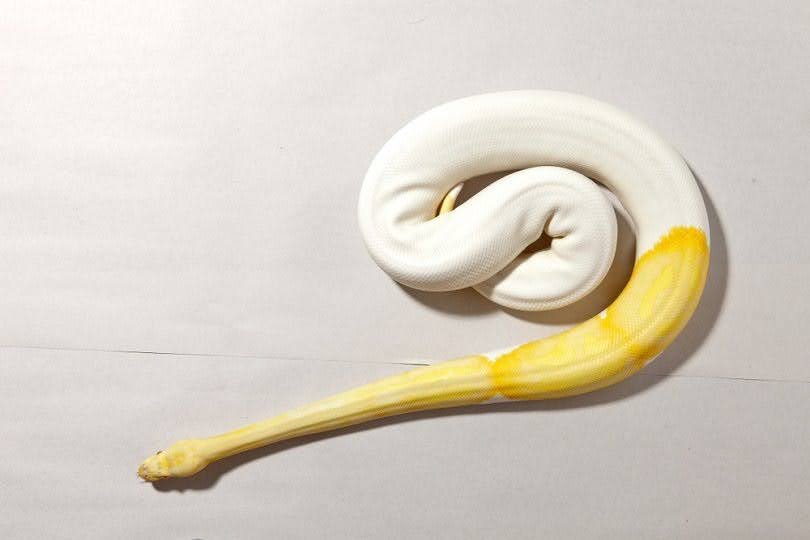
Albino ball pythons are easily recognized by their striking yellow and white scales and distinctive pink eyes. This rare morph occurs only when both parents carry the albino gene. Their unique appearance makes them highly sought after, with prices typically starting around $200.
Traits: Recessive gene; bright yellow and white scales.
3. Piebald Ball Python Morph

The piebald ball python is a distinctive and easily recognizable morph, featuring a white base with irregular patches of color. Most piebalds retain a normal-colored head. Prices for these snakes typically range from $200 to $400, depending on the amount of white in their pattern.
Traits: Recessive gene; unique white patches.
4. Banana Ball Python Morph
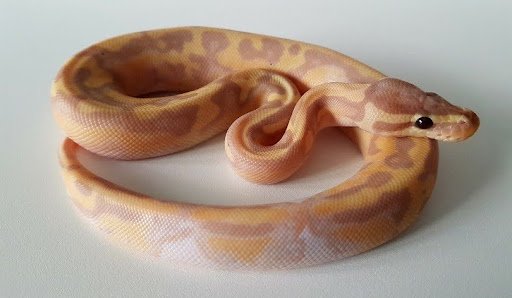
The banana ball python morph made headlines in 2003 when the first example sold for an impressive $25,000. Over time, their popularity has only grown, but they have also become more accessible. Featuring a tan base with vibrant yellow blotches, this striking morph now typically costs around $300.
Traits: Co-dominant gene; soft yellow coloration.
5. Clown Ball Python Morph

First discovered in 1999, the clown ball python gets its name from a teardrop-shaped marking under its eye found on the original specimen. This morph features a tan and brown coloration with copper tones, a reduced pattern, and a distinctive wide stripe.
Traits: Recessive gene; reduced pattern.
6. Axanthic Ball Python Morph
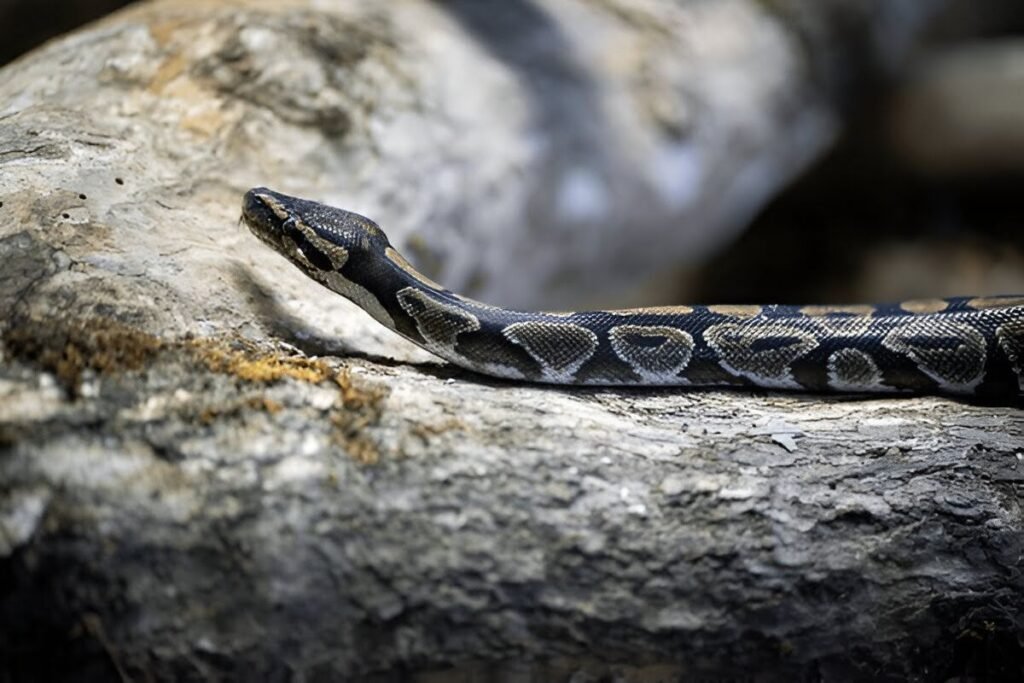
The axanthic ball python is a recessive morph that retains the same markings as a traditional ball python but features shades of silver, black, and white instead of the usual colors. This morph typically costs around $200.
Traits: Recessive gene; monochromatic gray tones.
7. Black Pastel Ball Python Morph
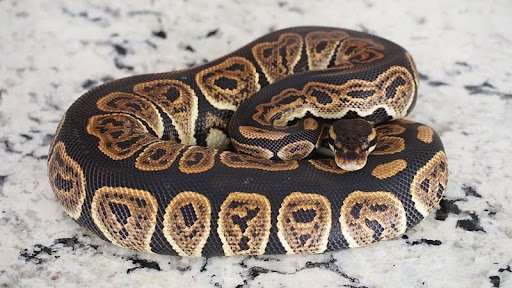
The black pastel ball python morph features a gray-black base color with the typical spotting pattern of ball pythons. This morph is relatively common and usually costs no more than $200.
Traits: Co-dominant gene; brighter yellows.
8. Super Pastel Ball Python Morph

The spider morph showcases a brown base with dark bands and spots, along with distinct black markings on its head. This morph is available for around $200.
Traits: Co-dominant (homozygous); vibrant coloration.
9. Spider Ball Python Morph
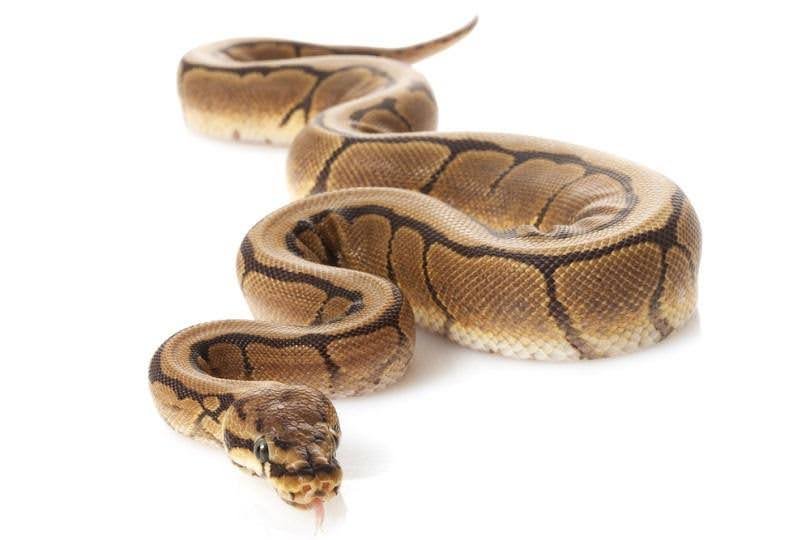
Spider morphs have a distinct webbed or “spider-like” pattern, along with lighter coloration. However, this morph is associated with neurological issues, known as the “wobble syndrome.”
Traits: Dominant gene; unique webbed pattern.
10. Mojave Ball Python Morph
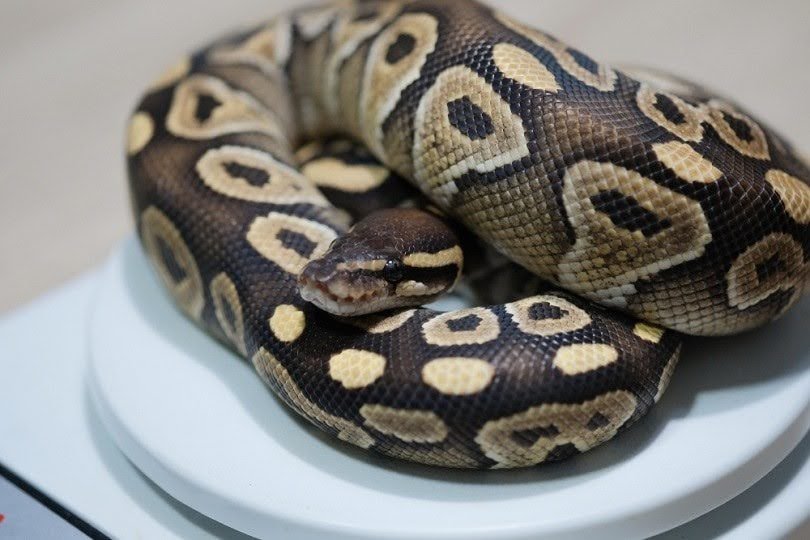
The Mojave is one of the most iconic ball python morphs, first bred in 2000. It is often used to create stunning patterns in future generations. Due to its popularity and availability, this morph can be purchased for around $100 today. The Mojave morph has dark black or brown patterns with distinct light flames and keyhole-shaped markings along the sides.
Traits: Co-dominant gene; light flames.
11. Leopard Ball Python Morph

Leopard ball pythons have a busy, chaotic pattern with dark brown or black base colors. This morph adds contrast and detail to designer morphs.
Traits: Co-dominant gene; chaotic pattern.
12. Pinstripe Ball Python Morph
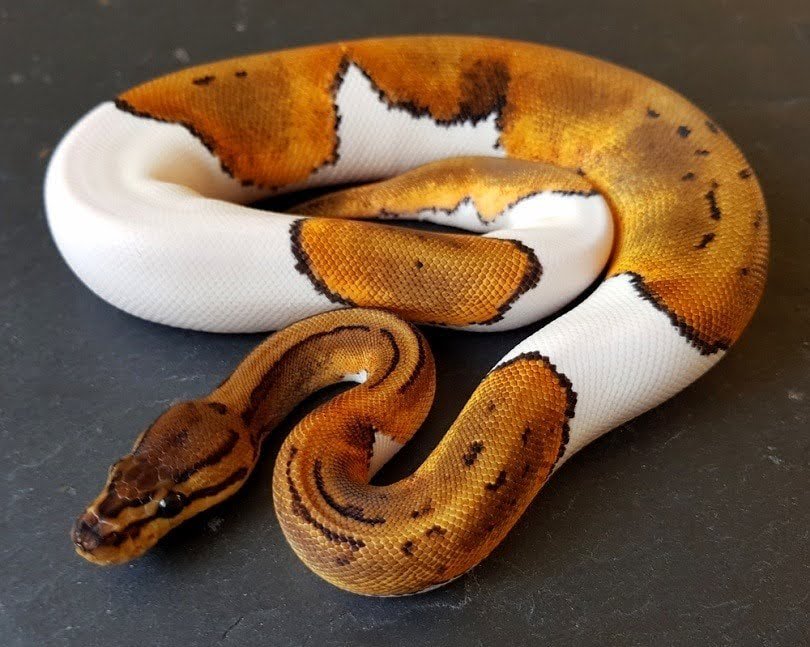
The pinstripe is a well-loved morph characterized by a brown base color and a clean, pattern less stripe running along its back. A high-quality example of this morph typically costs around $250. The Pinstripe morph features a golden brown base color with thin, clean stripes running down its body. This morph is valued for its simplicity.
Traits: Dominant gene; reduced pattern.
13. Fire Ball Python Morph

A fire ball python typically costs $200, while a super fire—produced by breeding two fire ball pythons and often called a black-eyed leucistic ball python—costs around $400.. Fire ball pythons are lighter than the Normal morph, with cleaner, more vibrant yellows and browns. When combined with other morphs, Fire often enhances brightness.
Traits: Co-dominant gene; clean, light coloration.
14. Black Pastel Ball Python Morph

The black pastel ball python morph features a gray-black base with the classic ball python spotting pattern. It is relatively easy to find and typically costs no more than $200. The Black Pastel morph has a darker base color with rich chocolate browns and dark patterns. This morph is ideal for dark designer morphs.
Traits: Co-dominant gene; dark tones.
15. Cinnamon Ball Python Morph
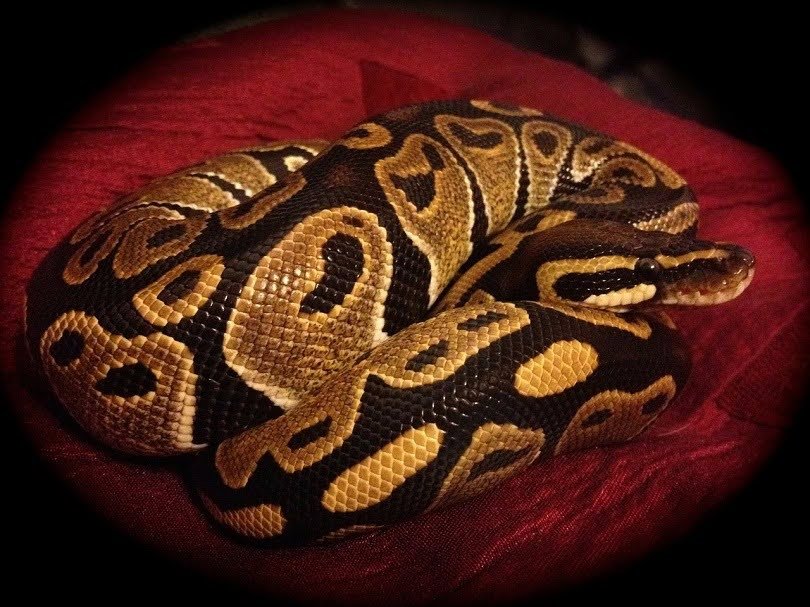
The cinnamon ball python is a popular morph that costs under $300. However, the super cinnamon, created by breeding two cinnamon ball pythons, is priced at around $500. Super cinnamon ball pythons have a rich, dark cinnamon color with no markings, and their coloration fades as they age. Cinnamon ball pythons feature warm, reddish-brown colors and smooth, soft patterns. This morph is commonly used in breeding projects.
Traits: Co-dominant gene; warm brown tones.
16. Butter Ball Python Morph
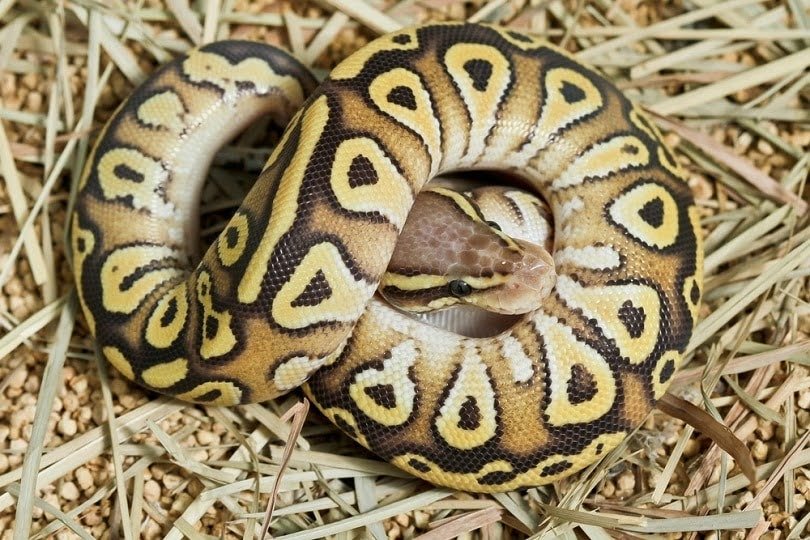
The butter ball python features yellow and caramel-colored scales. It is an affordable morph, with quality examples typically costing around $200. The Butter morph looks similar to the Lesser but features a softer, buttery yellow with faint light patterns.
Traits: Co-dominant gene; buttery appearance.
17. Lesser Ball Python Morph

The lesser is an affordable morph, priced around $200, though you may pay a bit more for one with a unique pattern. Initially considered rare, this morph—characterized by a blushed base color and spots along its back—has now become one of the most common ball python morphs. Lesser ball pythons have a clean, light brown base with golden highlights and a soft pattern. They’re highly versatile for breeding projects.
Traits: Co-dominant gene; clean patterns
18. GHI Ball Python Morph

The ghi ball python has a light belly and a black base color on its back. First discovered in 2007, it is a relatively affordable morph, typically costing around $300. The GHI morph has a dark, almost black appearance with light, chaotic markings. It’s one of the more dramatic ball python colors.
Traits: Co-dominant gene; dark and chaotic.
19. Yellow Belly Ball Python Morph
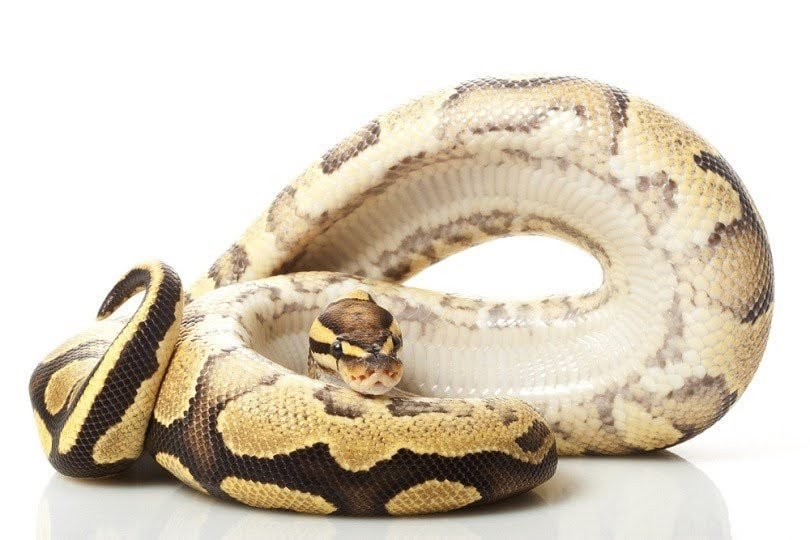
The Yellow Belly morph enhances other morphs by creating bright patterns and flames. Alone, it appears similar to a Normal morph but with subtle differences.
Traits: Co-dominant gene; enhances other morphs.
20. Enchi Ball Python Morph
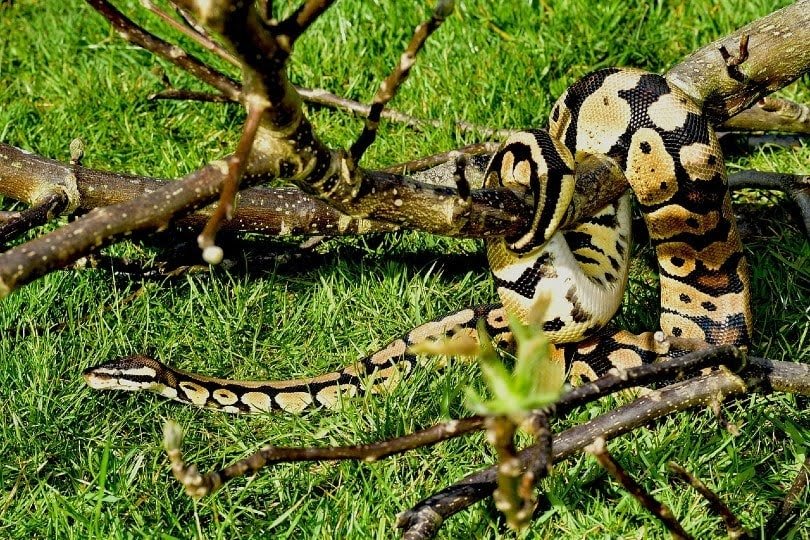
The Enchi Morph is an affordable option, typically costing $200 or less. It features orange sides and blushing on the head pattern. While it can be hard to identify this morph when they hatch, the differences become more noticeable as they grow older. Enchi ball pythons display cleaner, brighter patterns with enhanced orange and gold tones. It is a valuable morph for breeding projects.
Traits: Co-dominant gene; bright orange and gold.
You can also read about
How Climate Change Could Impact the Future of Ball Python Morphs?
Conclusion
Ball python morphs are a captivating example of how selective breeding can produce stunning results. With their calm personalities and vast range of ball python colors, these snakes are perfect pets for reptile enthusiasts at all experience levels. From the vibrant Banana and Piebald to the dark GHI and Phantom morphs, ball pythons offer something unique for everyone. Understanding the different ball python colors and morphs can help you choose the perfect snake for your collection. Whether you’re a seasoned breeder or a new hobbyist, these stunning snakes are guaranteed to impress.
FAQs
What is the most popular ball python morph?
The Albino, Piebald, and Banana morphs are among the most popular ball python morphs due to their bright and unique appearances.
How many ball python morphs exist?
There are over 4,000 documented ball python morphs, with new combinations being developed regularly through selective breeding.
Are ball python morphs expensive?
The price of a ball python morph varies greatly. Common morphs like Normal and Pastel can cost $50–$100, while rare or designer morphs can exceed $10,000.
Do certain ball python morphs have health issues?
Yes, some morphs like the Spider morph are prone to neurological issues known as “wobble syndrome,” which can affect their balance and coordination.
How do I care for a ball python regardless of morph?
All ball pythons require the same care: appropriate enclosure size, humidity, temperature gradients, and a consistent feeding schedule.
What is the rarest ball python morph?
Some of the rarest morphs include the Scaleless, Sunset, and Stranger morphs due to their unique traits and limited availability.
Can you breed different ball python morphs together?
Yes, many breeders combine morphs to create designer morphs with unique and striking ball python colors and patterns.
Are ball python morphs good pets for beginners?
Yes, ball pythons, regardless of morph, are docile, low-maintenance snakes, making them excellent pets for beginners.
How long do ball pythons live?
Ball pythons can live for 20–30 years in captivity with proper care, and some have even reached over 40 years.
How big do ball pythons get?
Ball pythons typically grow to 3–5 feet in length, with females usually being larger than males.



